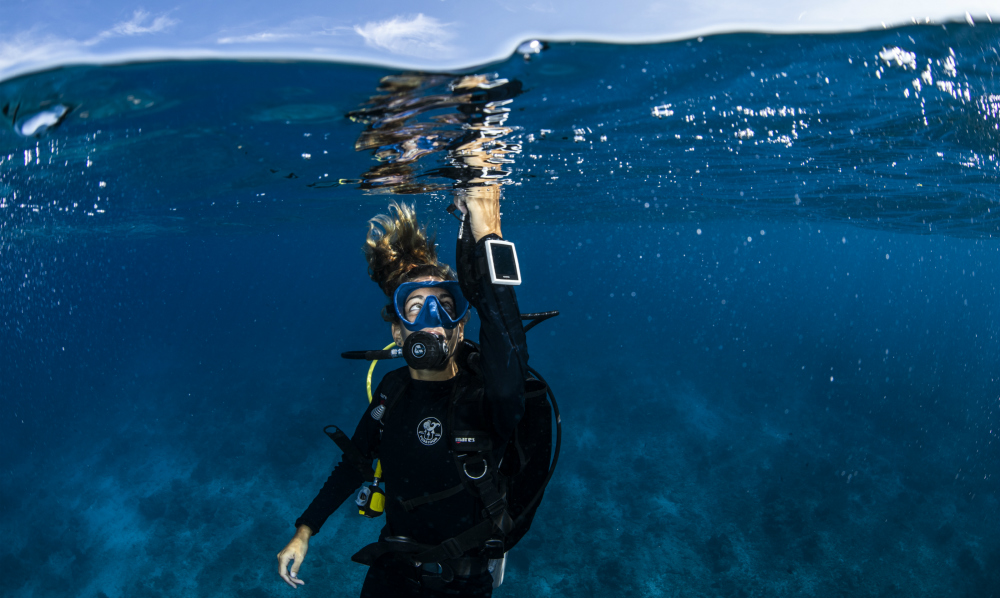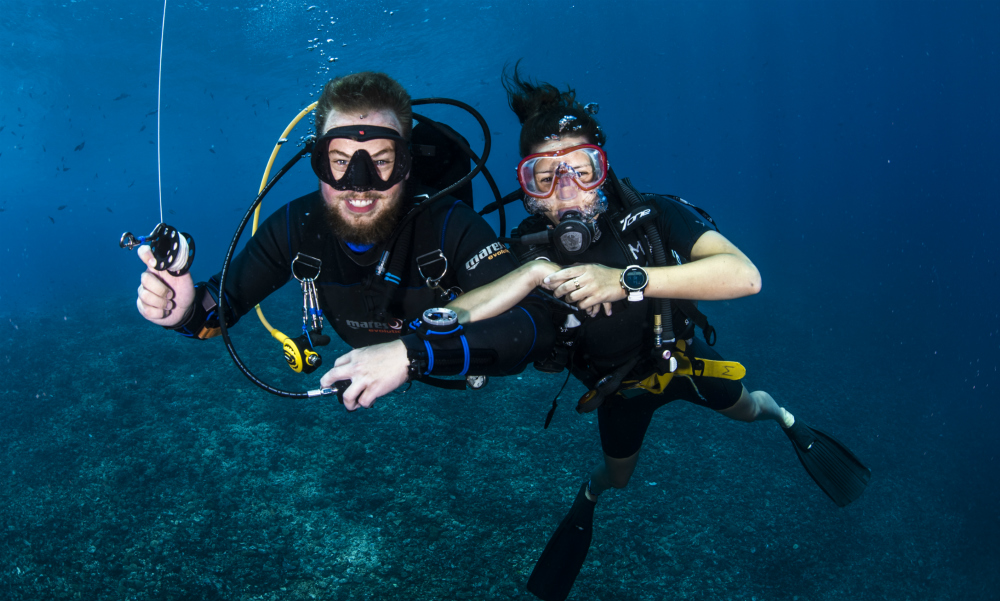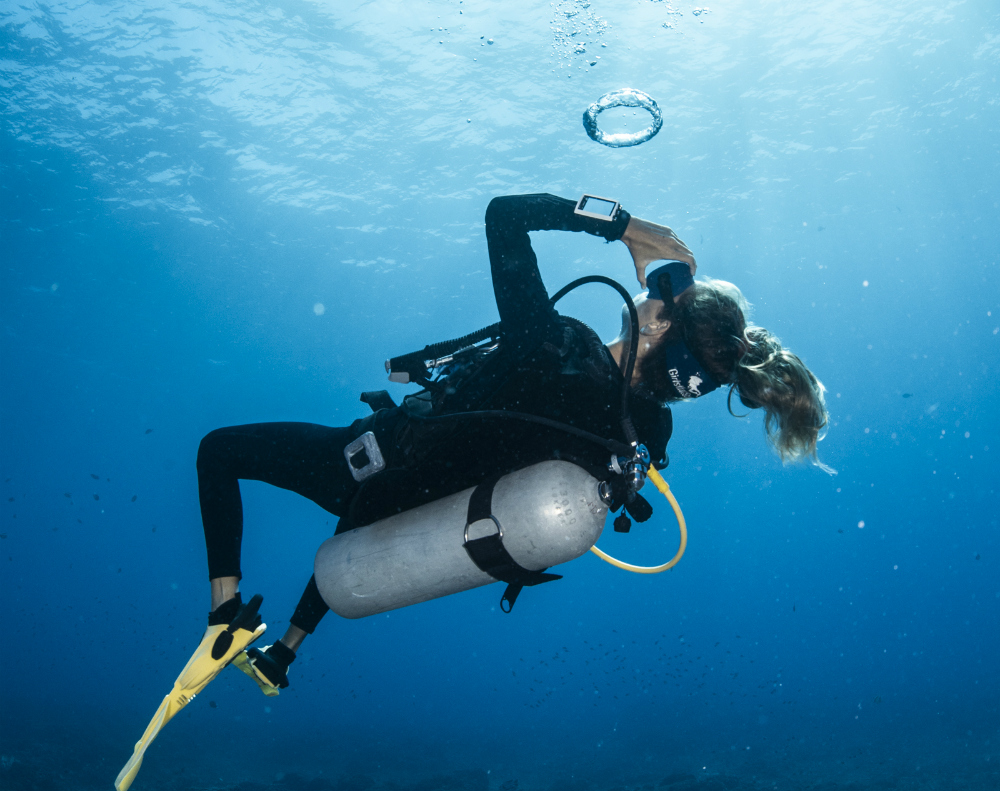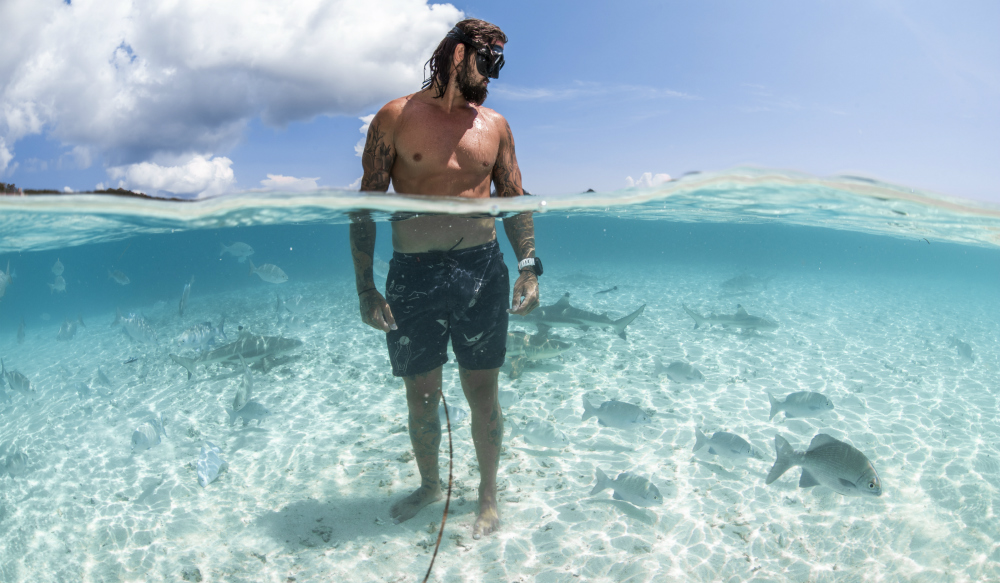 Spring into action slowly but surely after a longer break between dives. Photo by Alex Kydd.
Spring into action slowly but surely after a longer break between dives. Photo by Alex Kydd.
Partial as I am to pies, chips, peas and as many garishly colored fatty sauces as I can cram in, there comes a time when the wetsuit constricts the internal organs so much that radical action is called for. With the new diving season nearly upon us, it’s an opportune moment to review the best ways to trim down and ease those rusty diving muscles back into action.
 Ease those rusty diving muscles back into action. Photo by Alex Kydd.
Ease those rusty diving muscles back into action. Photo by Alex Kydd.
Improve fitness
Get in shape with some cardiovascular exercise, eg. running, swimming or cycling (as well as getting the ticker pumping, this will help develop flexibility, tone and strength in the core muscles of the back, abdomen and legs).
Stay hydrated
Keep those fluids up, particularly if you’ve had alcohol in the 24 hours before diving. It takes a few days to really get hydrated so stay on top of your water intake.
Easy start
Short, shallow, and in calm conditions are the only way to get back into the water after a pause. Diving is more fun when it is safer, and careful preparation, visualizations and warm up dives are good practice.
Stop smoking
No other action will have a more positive effect on your gas consumption, bottom times and overall health.
Lose weight
A lighter, more hydrodynamic physique will benefit you before, during and after dives.
Service kit
Regulators and demand valves in particular. Ensure your BCD/dry suit is working properly, your computer has sufficient battery power and the rest of your kit is in good condition – preferably before you get to the dive site!
Test dives
Try out any new equipment in a pool/sheltered area to get used to it. This goes for recently serviced kit too, have a few dives and be sure you are ready togo diving.
|mportant O2
Ensure you have access to oxygen in case of emergency, and make sure you have enough to last. Everyone should know where the oxygen is stowed whilst you are diving, if you aren’t sure then make it your business to find out.
Be prepared
Keep the details of your nearest chamber/helpline to hand, and if in any doubt, call them earlier rather than later,
 Photo by Alex Kydd.
Photo by Alex Kydd.
And remember, some basic but often overlooked ways of minimizing your inert gas burden and decompression stress:
Plan the Dive, Dive the Plan
Stay well within your planned dive parameters – your computer has an algorithm but has no idea of how tired/unfit/hungover you are, so don’t push its limits
Slowly does it
Keep your ascent rate controlled – watch your buoyancy, particularly in the shallow part of the water column.
Safety chill
Incorporate safety stops and pad them out if you have spare gas to do so, especially when you’ve been diving deep, strenuously, or in cold water. Imagine all the wonderful encounters you may experience if you hangout out a little bit longer underwater.
Post dive chill
Avoid doing any hard exercise for several hours after the dive (this includes lugging all your kit up hill) – bubbles are liberated from off-gassing tissues for some time after you’ve surfaced, and the less they are agitated the better.
Multi day chill
If you’re diving on multiple occasions over several consecutive days, try to insert a dive-free day every 2-3 days to allow your tissues to desaturate completely.
Stay down
Don’t go to altitude sooner than is recommended – generally 24 hours from completing your last dive.
 Photo by Alex Kydd.
Photo by Alex Kydd.
It’s worth emphasizing that in spite of doing everything correctly, and following all the established preventative strategies outlined above, divers still get bent for no apparent reason. There’s no justice in this world, and life is inherently unfair.
So make the call, ask for advice, alert someone, even if you feel you can’t possibly have DCI - any symptom that wasn’t present before the dive should be assumed to be DCI until proven otherwise.
About Dr Oli
Dr Oli, Hyperdive.co.uk, much like the surface of our blue dot planet Earth, is approximately 60-70% water. He constantly strives to put much of the other 30-40% to good use in the field of diving medicine.
Serving as the Medical Director and Senior Hyperbaric Physician at London Diving Chamber, UK for 13 years, this post at one of the busiest hyperbaric chambers in the UK has given him extensive experience in the assessment and management of all types of diving accidents and emergencies. In addition he has gained a thorough knowledge of the practice of hyperbaric medicine, for non-diving conditions.